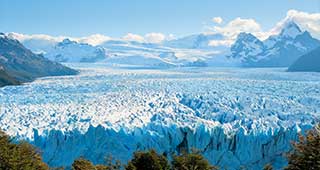Book NOW for $1 £1 €1 • Flexible Payments • No Change Fees • Private Departures Available
- Home >>
- Buenos Aires City Guide
Buenos Aires Travel Guide
Buenos Aires City Guide
If you were to be dropped in the centre of Buenos Aires with no knowledge of your destination, we wouldn’t blame you if an elegant European capital was the first thing that sprang to mind. Grand French architecture meets modern skyscrapers, touches of Italy are scattered throughout the city and pockets of Argentinian flare remind you that you’re still in South America. With its wide avenues, tree-lined boulevards and fresh aired, coastal location, Buenos Aires is far from the stuffy and chaotic feeling that many large cities are prone to. The cosmopolitan city is emerging as a must-see destination on the continent with travellers drawn to its gastronomic hotspots, quirky neighbourhoods and fun activities.
Buenos Aires is also considered a gateway to Patagonia - with direct flights reaching El Calafate within around three hours. Combine soaring mountains with a fascinating city and you have the perfect Argentinian adventure.
Trips that visit Buenos Aires
Highlights of Argentina & Brazil
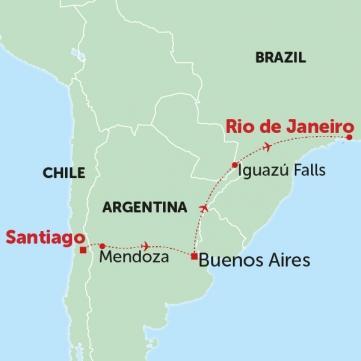
Duration:11 Days
Route:Santiago to Rio de Janeiro
Tour Code:HSF
Bolivia, Chile & Argentina
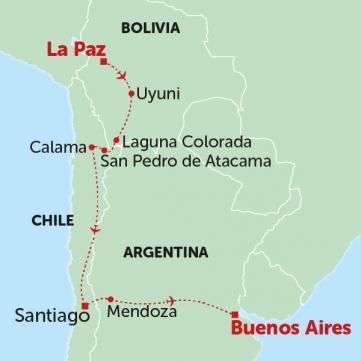
Duration:14 Days
Route:La Paz to Buenos Aires
Tour Code:HBA
Patagonia Adventure
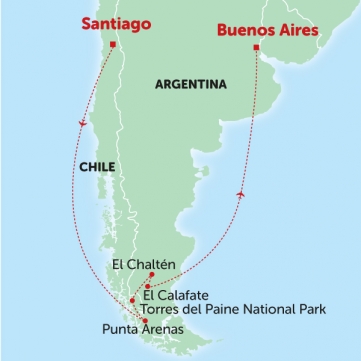
Duration:12 Days
Route:Santiago to Buenos Aires
Tour Code:HPSB
Buenos Aires Best Spots
From important historical landmarks to new-found hipster hangouts, Buenos Aires has a lot to offer. Like many other capital cities, it’s divided into various neighbourhoods, each encompassing unique sites and delicious restaurants. As the third most populated city in South America, and home to almost 3 million people, Buenos Aires can seem like a daunting place to explore. Here is a selection of the most popular spots in Buenos Aires.
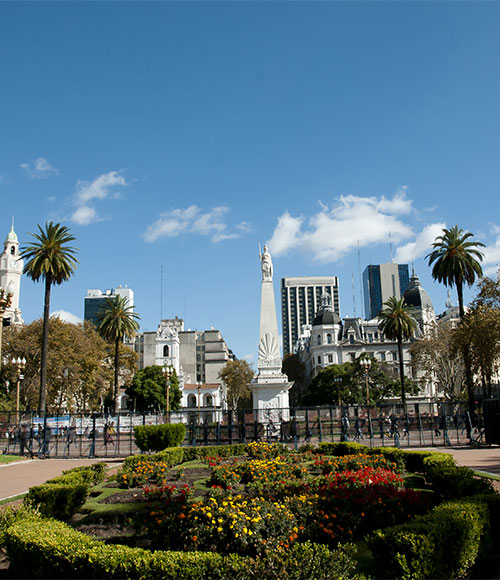
Plaza de Mayo
Located in the city centre of Buenos Aires, Plaza de Mayo is considered the most important square in the city. Formed in 1884, it’s been the setting of some of the most momentous events in the history of Argentina, including protests by the “Mothers of the Plaza de Mayo” whose children were displaced by the military during the Dirty War, as well many rallies and riots since the 1940’s. Plaza de Mayo is home to the Cabildo, the Casa Rosada, the Buenos Aires City Hall and the Metropolitan Cathedral. The Casa Rosada, also known as the Pink House, is the official presidential office and has been declared a National Historic Monument of Argentina. It’s perhaps most notable for Eva Peron’s final speech which she made from the balcony on October 17th 1951, a day which is now marked as Loyalty Day throughout the country.
Top Tip
If you find yourself in Buenos Aires over a weekend, head to Plaza de Mayo in the evening to enjoy free tango performances. The square is often filled with energetic couples dancing under the moonlight.
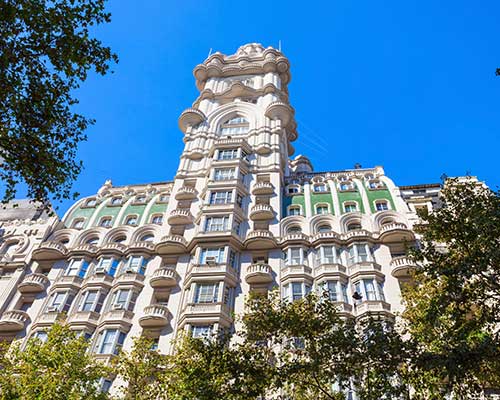
Avenida de Mayo
Born from the Plaza de Mayo is one of the most recognised streets in Buenos Aires - Avenida de Mayo. Extending just over one kilometre, it connects the Plaza de Mayo with the Congress Plaza and Argentine Congress. Along the avenue sits the Palacio Barolo, one of the most impressive buildings in the city with possibly the most fascinating story. Luis Barolo, an Italian immigrant who had found his fortune in the fabric business, believed Europe would cease to prosper after WWI and so commissioned Mario Palanti, an Italian architect, to build a European style building which was mirrored off his favourite work - Dante’s Divine Comedy. At the time, the building was the tallest in all of South America. Avenida de Mayo is also where you can find the oldest coffee shop in the city, Café Tortoni, a French-style cafe opened in 1858.
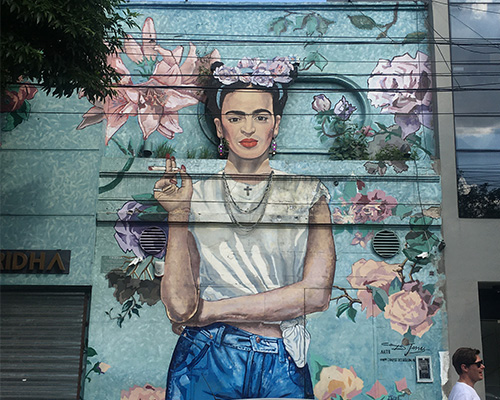
Palermo
The perfect destination for foodies, art lovers and photographers alike, Palermo is a blend of new-wave coolness and green open space. The neighbourhood is also the largest barrio in Buenos Aires, so set aside a full day to enjoy all it has to offer. Full of independent cafes, cool art shops and quirky bars, Palermo has become popular with international travellers and the younger generation of Buenos Aires. Shoppers can also delight in local markets at Plaza Serrano and Plaza Armenia, as well as some of the best antique markets in the city. Spend time exploring the side streets and you’re sure to find some incredible street art, from political pieces to quirky cartoons. Head into the area of “Palermo Hollywood” to see the impressive mural of Frida Kahlo, a Mexican artist who rose to fame due to her self-portraits and strong political stance.
Top Tip
Try to set aside a full day for exploring Palermo. Incredible street art is hidden round every corner and it can take a while to make your way around the markets. There are also various coffee shops to spend some time in if you need to escape the heat.
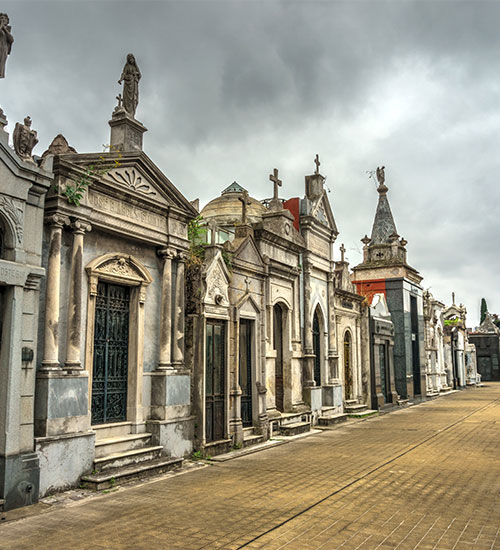
Recoleta
This stately residential neighbourhood remains one of the most affluent in Buenos Aires. The leafy streets are full of independent boutiques and fine-dining restaurants, as well as some unique museums such as the National Museum of Bellas Artes where you can discover work by local Argentinian artists. Another point of interest here is the Libreria El Ateneo Grand Splendid, a theatre turned bookstore which is considered one of the most beautiful in the world. And of course no visit to Recoleta would be complete without stopping by the world-renowned cemetery. Here you will find grand and eloquently designed tombs which house some of the most prominent characters in Argentine history, including Eva Peron. The beautiful and intricately designed tombs and sculptures has turned this cemetery into a fascinating open-air museum and is well worth a stop when in Buenos Aires.
Top Tip
Recoleta cemetery has become one of the most popular attractions in Buenos Aires. If you want to experience it without the crowds, try to get there early. It can open as early as 7.30am.
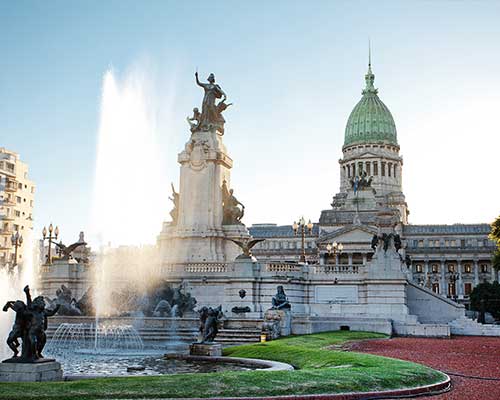
Plaza del Congreso
The Plaza del Congreso is located at the western end of Avenida de Mayo - connecting the Congress with the Pink Palace and Plaza de Mayo. The public park covers an area of 3 hectares and encompasses statues, fountains and gardens, as well as the Congress of the Argentine Nation. The Baroque style structure was built in 1906 and remains one of the most important buildings in the city. One of the most viewed statues in the park is the Monument of the Two Congresses, which celebrates the 1816 Argentine declaration of indepence. Argentina’s Kilometre Zero, from which all distances are traditionally measured, is also located in the Plaza del Congreso.
Argentina Tailor-made Holidays
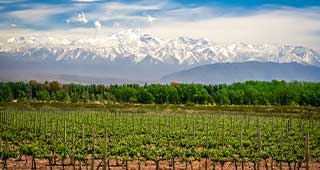
Wine Valleys of Chile & Argentina
Duration:10 Days
Route:Santiago to Buenos Aires
Tour Code:TMWV
Food & Drink in Buenos Aires
Buenos Aires is a fantastic location for food lovers from around the world. Not only does it offer some of the best lamb in South America, but it also has an ever-growing culinary scene which is perfect for all types of foodies. Enjoy a traditional “parilla”, otherwise known as a classic grill, or delight in one of the many authentic Italian restaurants across the city.

Local Markets and Street Food
Markets and street food vendors are great places to pick up affordable and authentic food. One of the most famous in Buenos Aires is San Telmo Market, bursting with great food, coffee and even antiques. Argentinian’s love their grilled meat, and some of the best in the world can be found down the streets of Buenos Aires. Steakhouses are common and it’s also perfectly normal to see restaurants quiet at 6pm - most locals sit down to eat around 9pm or later. Some local favourites are Gran Parilla del Plata and Don Julio, but we guarantee you won’t find it difficult to find a decent meal in Buenos Aires. Buenos Aires also has a string of fine-dining restaurants for those who enjoy the finer things in life.
You can’t visit Argentina without indulging in a little (or a lot - that’s fine too!) of Dulce de Leche. This caramel-esque treat is popular throughout South America and is commonly used in desserts and ice-cream flavours, or simply spread on a bit of toast.

Vegetarian and Vegan
Much like other large cities across the world, Buenos Aires is not immune to the rise in plant-based lifestyles and vegan and vegetarian options are slowly popping up throughout the city - but you have to do your research. Unlike many Western cities, it’s not guaranteed every restaurant will have a vegetarian option so being a bit prepared is vital. Check out HappyCow before you go to check which restaurants in your area cater to plant-based eating. Vegetarian empanadas are a common choice and their popularity means they can be found in restaurants, markets and street food stalls alike. Due to the heavy European influence in the city, there are also an abundance of Italian restaurants which provide excellent meat-free options.
Which dishes should I try in Buenos Aires?
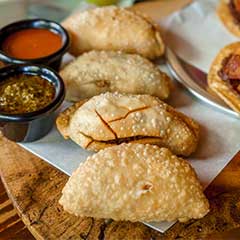
Empanadas
Curved pastries stuffed with all sorts of tasty delights from cheese to meats, Empanadas are a common food found in Argentina.
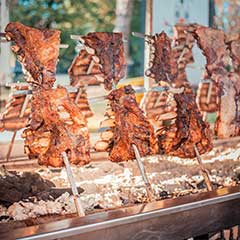
Meat
Grilled meat is a way of life in Argentina - home to some of the best lamb and beef on the planet. Parrillas (steakhouses) are found throughout the city.
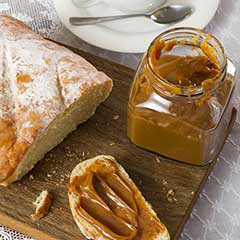
Dulce de Leche
A sweet treat that can be smothered on just about anything your heart desires, Dulce de Leche is a must try for dessert in Argentina.

Pizza
Due to an influx of Italian settlers, Argentinian food has taken on a huge Italian influence. Try the Milanesa Napolitana, thinly cut meat deep fried in breadcrumbs and smothered in tomato sauce and cheese.
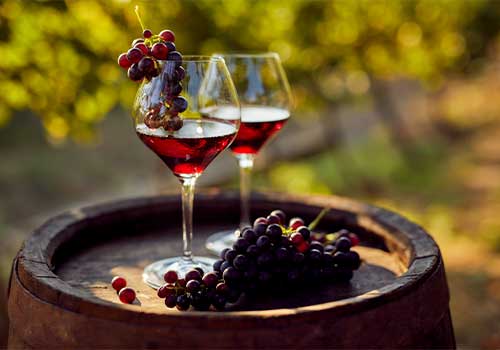
Drinks in Buenos Aires
If Argentina is known for anything other than its meat - it’s the wine. Mendoza is one of the most famous wine regions in the world and produces some of Argentina’s top wines which are exported around the world. Buenos Aires is home to an abundance of wine bars and restaurants which offer some of the best beverages the country has to offer - particularly the Malbec. As a capital city, bars and clubs in Buenos Aires offer all types of international drinks.
Mate is a traditional drink in Argentina which contains caffeine, an infusion of dried leaves and Yerba mate, a type of herb subtropical to South America. Drank through a metal straw called a “bombilla” the drink is bitter and definitely not to everyone's taste but it’s an important part of tradition in Argentina.
Getting around Buenos Aires
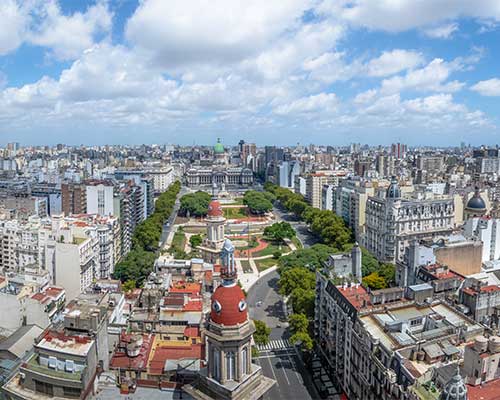
Buenos Aires is a large city and hence has plenty of public transport options. The downtown area is easily walkable, with a grid system which makes it easy to find your way around. Walking is also one of the best ways to get to know a city and the area surrounding your hotel, but like with any capital city we recommend avoiding quiet areas at night, especially if you are unfamiliar with the neighbourhood.
The city has a metro system which is the best way to easily reach various areas of the city. You will need to purchase a Sube card for travelling on public transport. It costs 90 pesos and you’ll have to top up with a minimum of 110 pesos for your first journey. It’s an electronic tap system which will tell you when you need to top up again. Unlike many other metro systems, you don’t tap out so the cost is the same no matter the length of the journey.
Buses are readily available throughout the city however unless you have a decent understanding of Spanish they can be hard to navigate as drivers most likely won’t speak English. You will need to use your Sube card on the bus and if you ensure your journey is well planned out then the bus can be a good option. Another fantastic way to get around is with Uber, which is readily available throughout the city and low in cost.
Group Tours to Argentina
Patagonia Highlights
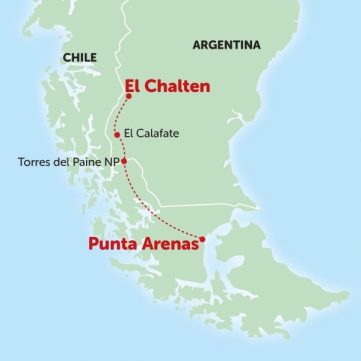
Duration:10 Days
Route:Punta Arenas to El Chalten
Tour Code:HPPE
Buenos Aires to Rio Express
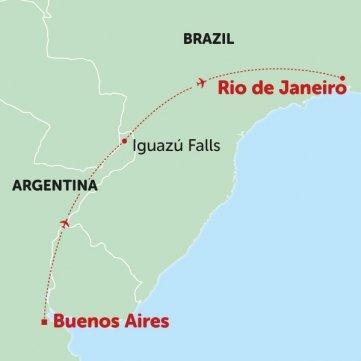
Duration:6 Days
Route:Buenos Aires to Rio de Janeiro
Tour Code:HBR
Chile, Argentina & Brazil
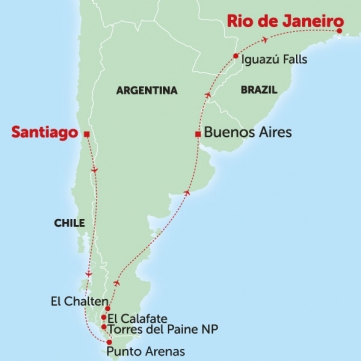
Duration:18 Days
Route:Santiago to Rio de Janeiro
Tour Code:HPSR
Top things to do in and around Buenos Aires
Buenos Aires is one of the most visited cities in South America and has plenty to keep travellers of all sorts interested. Whether you enjoy learning about history, seeing stunning architecture or eating your way around the barrios, Buenos Aires will leave you captivated and eager to see more.
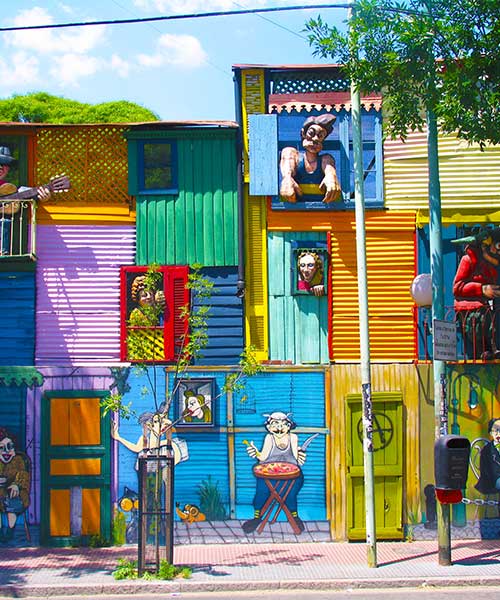
Visit La Boca
The neighbourhood of La Boca rose to prominence because of the world-renowned football club, Boca Juniors. A working class neighbourhood, La Boca was originally a working shipyard. The workers used cast-away material to build houses and left over paint to decorate. As one colour was rarely enough to cover a whole house, the residencies became a patchwork of vibrance. However this did not change the barrios poorer status and the workers soon left. In the 50’s, a local artist attempted to bring La Boca back to life with a few more slicks of paint, and the colourful barrio has been a tourist attraction ever since.
However, to this day, La Boca remains one of the poorest areas of Buenos Aires and should be treated with respect, after all there are real people living here - it’s not just a photo for your Instagram. While the street of El Caminito is an energetic tourist hub with plenty of restaurants, bars, souvenir shops and tango dancers, other areas are deemed unsafe so travellers should never stray off this main street. If you do wish to visit La Boca, we recommend hiring a local guide and learning the history of the people to gain a better understanding of this barrio. If you choose to visit La Boca, stay around the area of El Caminito and watch your belongings at all times. It is also advised not to go there after dark.
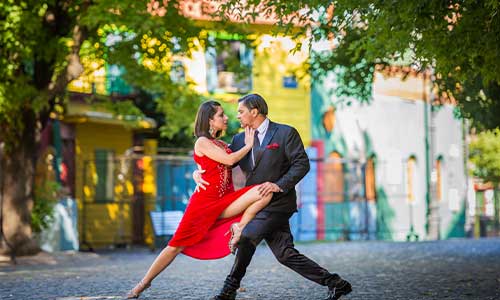
Experience a Tango Show
Argentina lives and breathes tango, so it’s only fitting that you get a taste of the true Argentinian flavours by seeing a local tango show. There are plenty of options to experience this too. Visit the Plaza de Mayo on the weekends to see couples dancing in the square, check out local outdoor restaurants that include dancing or go all out and book a three course dinner with tango dancers putting on a spectacular performance.
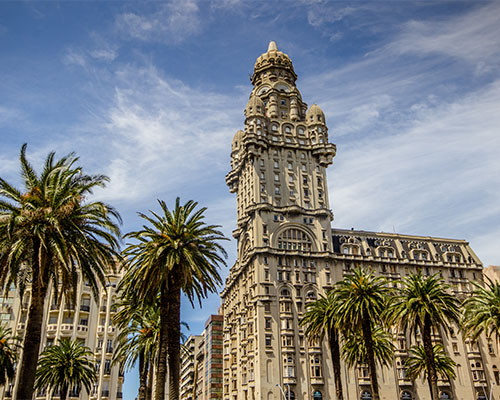
Take a day trip to Uruguay
The capital city of Uruguay, Montevideo, is only a 2.5 hour ferry ride from Buenos Aires and has regular departures throughout the day, making it a great trip if you want to experience another South American country. Montevideo is a prosperous city and has previously been rated for its quality of life, financial success and rich entrepreneurial culture. Check out the Teatro Solís, which is the second largest in South America and one of the most iconic buildings in Uruguay, or explore the Museum of Fine Arts which houses displays from local and international artists. Stop by the Plaza Indepencia, the heart of the city and where you can still see remains of the old city walls and town gate. Finally, relax on the beach or wander along the Rambla, the 10 mile long boulevard along the coast that looks out over the Atlantic Ocean.
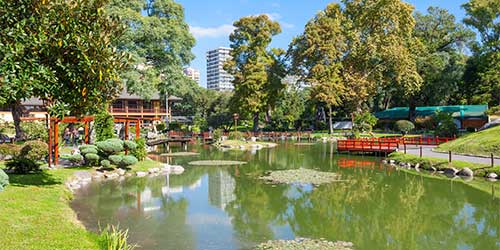
Take a breather in the Japanese Gardens
When the city buzz gets a little too much, head out to Palermo and walk to the various parks and gardens located in the north of the neighbourhood. Between the Rose Garden, Japanese Gardens and lakes, it’s a beautiful location to wander around and take in the landscape on a warm day. The most popular is the Jardín Japonés, or the Japanese Garden, which was created in 1967 and remains one of the largest outside of Japan. As well as a traditional restaurant, the gardens house a shop famous for its collection of bonsai trees.
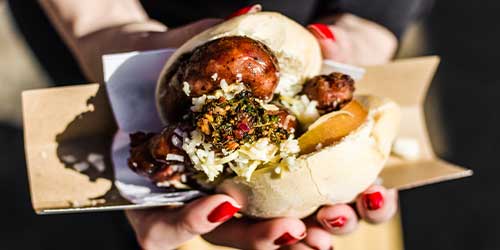
Book onto a foodie tour
If you really want to get under the skin of Argentina's best dishes, then book onto a food tour. They will explain the history of the country's popular cuisines, advise on which dishes to look out for and have the best recommendations for where to eat. Some even include a trip to local markets and a cooking class.
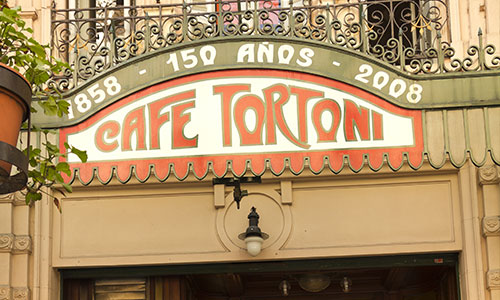
Have a coffee at Cafe Tortoni
Cafe Tortoni is the oldest cafe in Buenos Aires and was opened in 1858 by a mysterious French immigrant named Touan. The cafe was inspired by Cafe Tortini in Paris, hence the same name and similar interiors. The establishment soon became a meeting place for local artists and famous scholars. Many of the tables inside are named after the famous faces that once sat there - such as the writer Jorge Luis Borges and tango singer Carlos Gardel. The cafe is beautiful both inside and out, and while a little more expensive than coffee shops around the city, the historical importance of the buildings means it's well worth a quick look.
Argentina Blogs
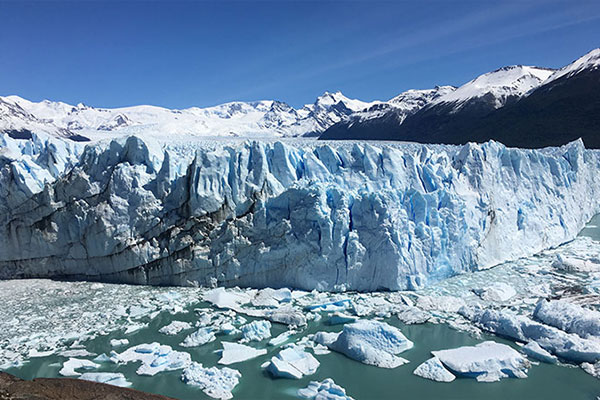
What to expect on a trip to Patagonia
Patagonia is the wild child of South America, nestled deep in the south of the continent straddling both Chile and Argentina. Coated in mountains, forests, lakes, glaciers and more, the rugged region has been attracting keen hikers for decades. Having just embarked on my own Patagonian adventure for two weeks, I have compiled a list of what you should expect if you’re planning a holiday to Patagonia.
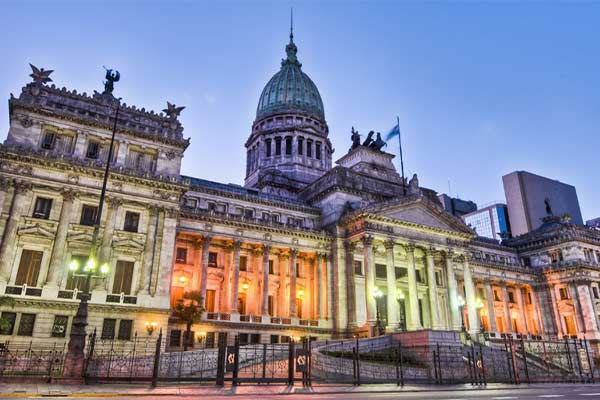
What's so special about Buenos Aires?
At the moment, Argentina is great value for money due to recent sharp decline in the value of the peso. It is a seductive, diverse and vast country full of contrasts. From the icy end-of-the-earth Ushuaian wilderness to the European influence of the capital. The indigenous north in the Andean foothills, to gaucho estancias and the fast-developing viticulture, there’s a lot to sink your teeth into. Take advantage of how far you can make your money go in Argentina and undertake an all-encompassing adventure.
Featured Tours




